Hannah Teufel
Arabic Stable LM: Adapting Stable LM 2 1.6B to Arabic
Dec 05, 2024Abstract:Large Language Models (LLMs) have shown impressive results in multiple domains of natural language processing (NLP) but are mainly focused on the English language. Recently, more LLMs have incorporated a larger proportion of multilingual text to represent low-resource languages. In Arabic NLP, several Arabic-centric LLMs have shown remarkable results on multiple benchmarks in the past two years. However, most Arabic LLMs have more than 7 billion parameters, which increases their hardware requirements and inference latency, when compared to smaller LLMs. This paper introduces Arabic Stable LM 1.6B in a base and chat version as a small but powerful Arabic-centric LLM. Our Arabic Stable LM 1.6B chat model achieves impressive results on several benchmarks beating multiple models with up to 8x the parameters. In addition, we show the benefit of mixing in synthetic instruction tuning data by augmenting our fine-tuning data with a large synthetic dialogue dataset.
Rephrasing natural text data with different languages and quality levels for Large Language Model pre-training
Oct 28, 2024



Abstract:Recently published work on rephrasing natural text data for pre-training LLMs has shown promising results when combining the original dataset with the synthetically rephrased data. We build upon previous work by replicating existing results on C4 and extending them with our optimized rephrasing pipeline to the English, German, Italian, and Spanish Oscar subsets of CulturaX. Our pipeline leads to increased performance on standard evaluation benchmarks in both the mono- and multilingual setup. In addition, we provide a detailed study of our pipeline, investigating the choice of the base dataset and LLM for the rephrasing, as well as the relationship between the model size and the performance after pre-training. By exploring data with different perceived quality levels, we show that gains decrease with higher quality. Furthermore, we find the difference in performance between model families to be bigger than between different model sizes. This highlights the necessity for detailed tests before choosing an LLM to rephrase large amounts of data. Moreover, we investigate the effect of pre-training with synthetic data on supervised fine-tuning. Here, we find increasing but inconclusive results that highly depend on the used benchmark. These results (again) highlight the need for better benchmarking setups. In summary, we show that rephrasing multilingual and low-quality data is a very promising direction to extend LLM pre-training data.
Stable LM 2 1.6B Technical Report
Feb 27, 2024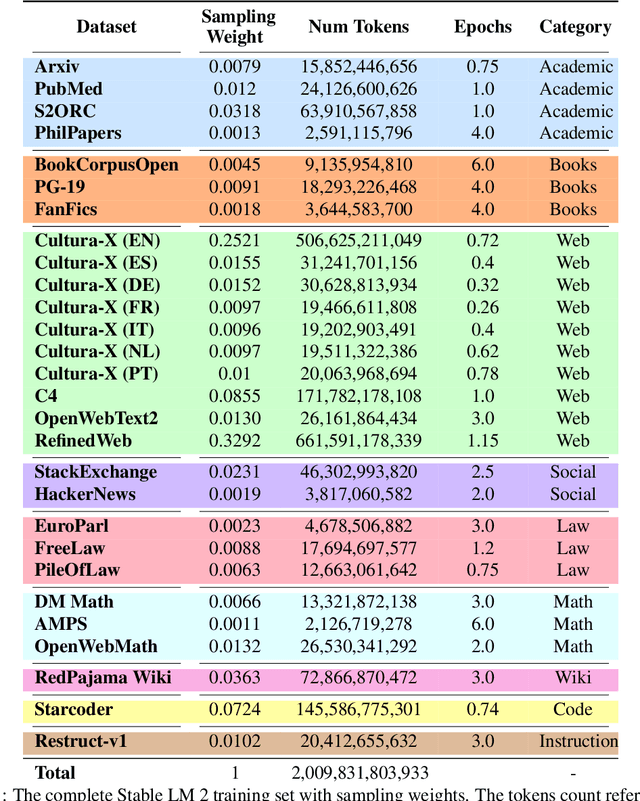
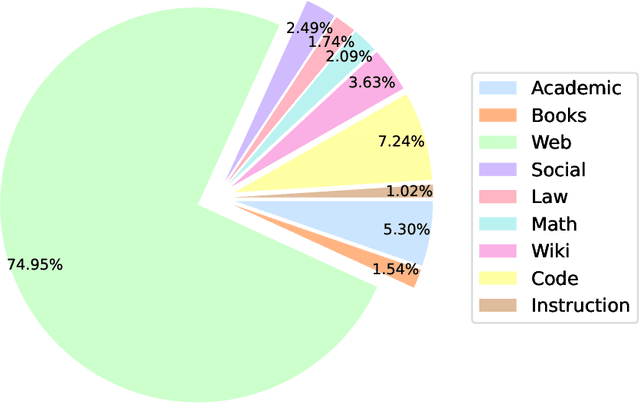
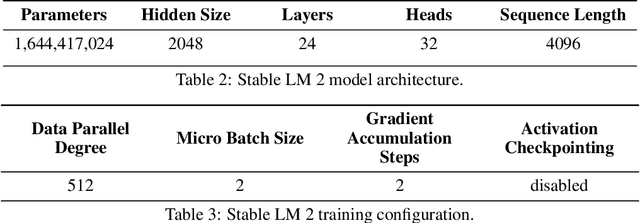
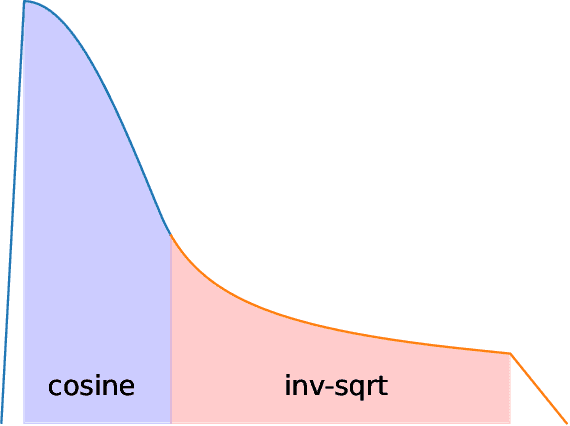
Abstract:We introduce StableLM 2 1.6B, the first in a new generation of our language model series. In this technical report, we present in detail the data and training procedure leading to the base and instruction-tuned versions of StableLM 2 1.6B. The weights for both models are available via Hugging Face for anyone to download and use. The report contains thorough evaluations of these models, including zero- and few-shot benchmarks, multilingual benchmarks, and the MT benchmark focusing on multi-turn dialogues. At the time of publishing this report, StableLM 2 1.6B was the state-of-the-art open model under 2B parameters by a significant margin. Given its appealing small size, we also provide throughput measurements on a number of edge devices. In addition, we open source several quantized checkpoints and provide their performance metrics compared to the original model.
Quality-Diversity through AI Feedback
Oct 31, 2023



Abstract:In many text-generation problems, users may prefer not only a single response, but a diverse range of high-quality outputs from which to choose. Quality-diversity (QD) search algorithms aim at such outcomes, by continually improving and diversifying a population of candidates. However, the applicability of QD to qualitative domains, like creative writing, has been limited by the difficulty of algorithmically specifying measures of quality and diversity. Interestingly, recent developments in language models (LMs) have enabled guiding search through AI feedback, wherein LMs are prompted in natural language to evaluate qualitative aspects of text. Leveraging this development, we introduce Quality-Diversity through AI Feedback (QDAIF), wherein an evolutionary algorithm applies LMs to both generate variation and evaluate the quality and diversity of candidate text. When assessed on creative writing domains, QDAIF covers more of a specified search space with high-quality samples than do non-QD controls. Further, human evaluation of QDAIF-generated creative texts validates reasonable agreement between AI and human evaluation. Our results thus highlight the potential of AI feedback to guide open-ended search for creative and original solutions, providing a recipe that seemingly generalizes to many domains and modalities. In this way, QDAIF is a step towards AI systems that can independently search, diversify, evaluate, and improve, which are among the core skills underlying human society's capacity for innovation.
MultiFusion: Fusing Pre-Trained Models for Multi-Lingual, Multi-Modal Image Generation
May 24, 2023Abstract:The recent popularity of text-to-image diffusion models (DM) can largely be attributed to the intuitive interface they provide to users. The intended generation can be expressed in natural language, with the model producing faithful interpretations of text prompts. However, expressing complex or nuanced ideas in text alone can be difficult. To ease image generation, we propose MultiFusion that allows one to express complex and nuanced concepts with arbitrarily interleaved inputs of multiple modalities and languages. MutliFusion leverages pre-trained models and aligns them for integration into a cohesive system, thereby avoiding the need for extensive training from scratch. Our experimental results demonstrate the efficient transfer of capabilities from individual modules to the downstream model. Specifically, the fusion of all independent components allows the image generation module to utilize multilingual, interleaved multimodal inputs despite being trained solely on monomodal data in a single language.
M-VADER: A Model for Diffusion with Multimodal Context
Dec 07, 2022Abstract:We introduce M-VADER: a diffusion model (DM) for image generation where the output can be specified using arbitrary combinations of images and text. We show how M-VADER enables the generation of images specified using combinations of image and text, and combinations of multiple images. Previously, a number of successful DM image generation algorithms have been introduced that make it possible to specify the output image using a text prompt. Inspired by the success of those models, and led by the notion that language was already developed to describe the elements of visual contexts that humans find most important, we introduce an embedding model closely related to a vision-language model. Specifically, we introduce the embedding model S-MAGMA: a 13 billion parameter multimodal decoder combining components from an autoregressive vision-language model MAGMA and biases finetuned for semantic search.
Comparison of synthetic dataset generation methods for medical intervention rooms using medical clothing detection as an example
Sep 23, 2022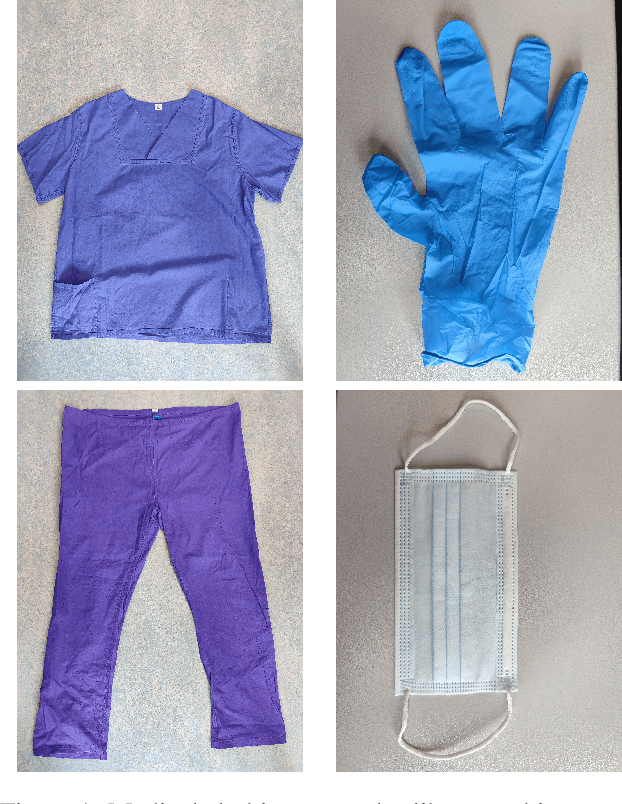
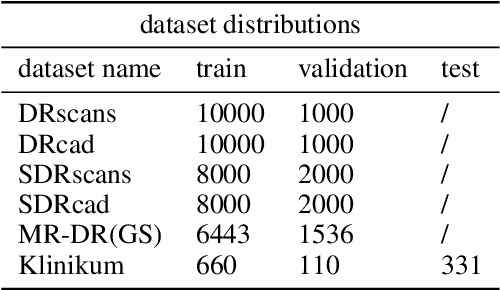
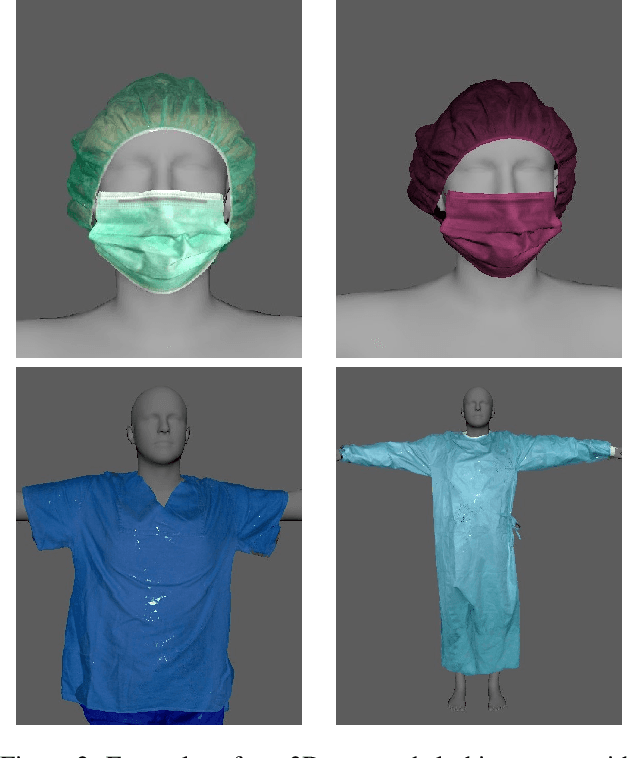
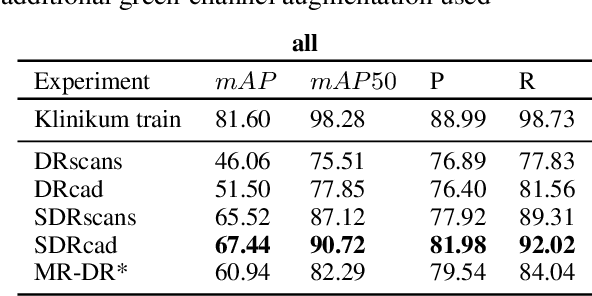
Abstract:The availability of real data from areas with high privacy requirements, such as the medical intervention space, is low and the acquisition legally complex. Therefore, this work presents a way to create a synthetic dataset for the medical context, using medical clothing as an example. The goal is to close the reality gap between the synthetic and real data. For this purpose, methods of 3D-scanned clothing and designed clothing are compared in a Domain-Randomization and Structured-Domain-Randomization scenario using an Unreal-Engine plugin or Unity. Additionally a Mixed-Reality dataset in front of a greenscreen and a target domain dataset were used. Our experiments show, that Structured-Domain-Randomization of designed clothing together with Mixed-Reality data provide a baseline achieving 72.0% mAP on a test dataset of the clinical target domain. When additionally using 15% of available target domain train data, the gap towards 100% (660 images) target domain train data could be nearly closed 80.05% mAP (81.95% mAP). Finally we show that when additionally using 100% target domain train data the accuracy could be increased to 83.35% mAP.
 Add to Chrome
Add to Chrome Add to Firefox
Add to Firefox Add to Edge
Add to Edge